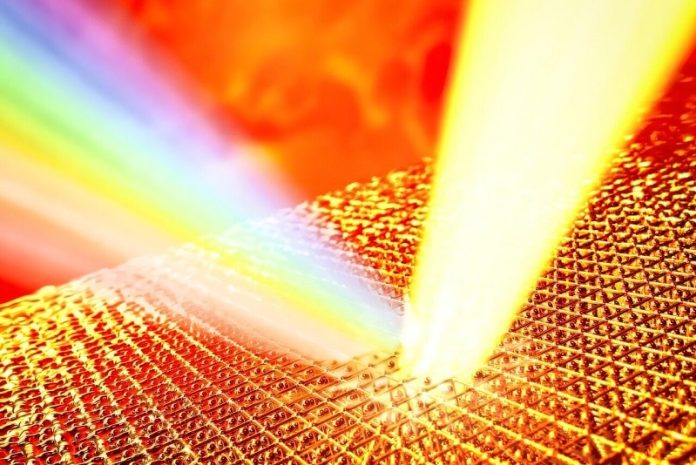
In a groundbreaking experiment, scientists have superheated solid gold to astonishing temperatures and made a direct measurement of its atomic temperature—something researchers have struggled to do for decades.
The results not only broke scientific records but also overturned a 40-year-old theory about the limits of how hot solids can get before falling apart.
The study, published in Nature, was led by a team from the SLAC National Accelerator Laboratory in California, working with researchers from universities around the world.
Their work focused on a strange form of matter known as “warm dense matter,” which exists in extreme environments like the cores of planets, exploding stars, and fusion reactors.
These conditions can reach hundreds of thousands of degrees, but until now, no one could accurately measure how hot individual atoms get in such extreme states.
According to SLAC scientist Bob Nagler, this has long been a problem. While scientists could measure pressure and density in these materials, temperature measurements were mostly rough estimates.
This lack of precision slowed down progress in understanding how materials behave in extreme environments.
To solve this, the team spent nearly a decade developing a new method that could directly measure atom temperatures by tracking their speed.
When atoms are heated, they vibrate faster. Using a powerful laser, the researchers superheated a paper-thin layer of gold in trillionths of a second. They then shot ultrabright X-rays through the gold.
These X-rays bounced off the vibrating atoms, and the tiny change in their frequency revealed how fast the atoms were moving—and therefore how hot they were.
To their surprise, the gold reached a temperature of about 19,000 kelvins (nearly 34,000 degrees Fahrenheit)—more than 14 times hotter than gold’s normal melting point—without turning into a liquid. This challenges a long-standing idea in physics called the “entropy catastrophe,” which predicted that beyond a certain temperature, solids would rapidly collapse into chaos.
Tom White, a physicist at the University of Nevada, Reno and a co-leader of the study, said that although the gold was heated to incredible temperatures, it remained solid because the heating happened so quickly. This lightning-fast process didn’t give the atoms time to spread out and melt. While it might sound like a violation of the laws of physics, it actually fits within the rules—as long as things happen fast enough.
The discovery opens new doors for studying matter under extreme conditions. Fusion energy researchers, for example, could use this method to understand how fusion fuel behaves when compressed and heated. Knowing the exact temperature of atoms could help design better reactors and fuel targets.
The team has already used the new method in other experiments, including ones that simulate the crushing forces inside giant planets. With this tool, scientists can now explore temperatures from 1,000 to 500,000 kelvins in unprecedented detail.
As Nagler put it, “If our very first experiment using this technique led to a major challenge to established science, I can’t wait to see what comes next.”



